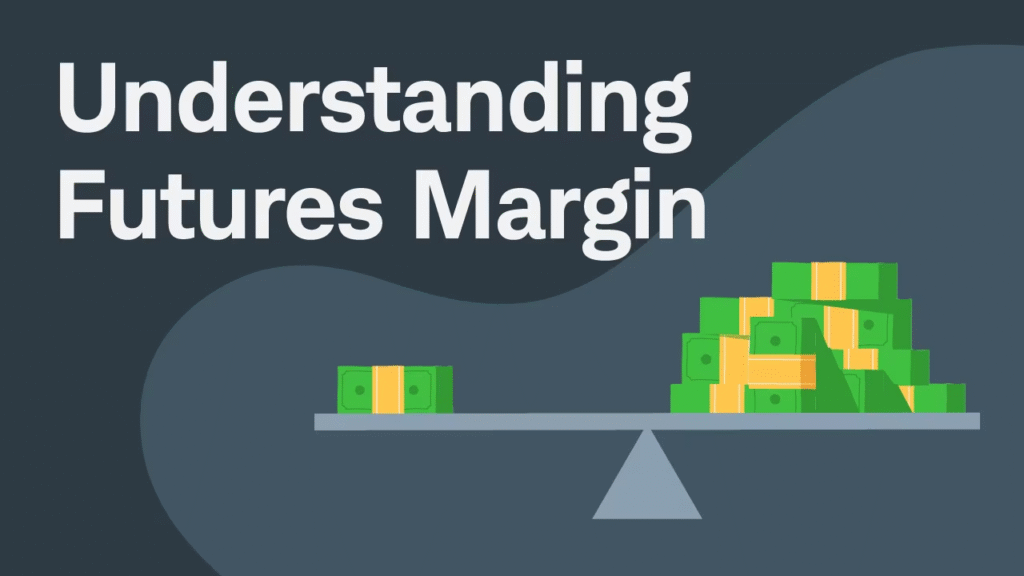Introduction
Investing in the financial markets offers many ways to grow wealth, and one such powerful yet often misunderstood tool is futures investment. Futures contracts play a crucial role in the global financial ecosystem by allowing investors, businesses, and traders to hedge risks, speculate on price movements, and diversify portfolios.
Whether you’re new to investing or looking to expand your knowledge, understanding futures investment can open up new avenues to enhance your financial strategy. This article dives deep into what futures investment is, how it works, its benefits, risks, and practical tips to get started confidently.
Key Takeaways
- Futures investment involves contracts to buy/sell assets at a future date and price.
- It offers leverage, hedging opportunities, and diversification but comes with high risks.
- Understanding contract terms, market behavior, and risk management is critical.
- Start with education, demo trading, and gradually increase exposure.
- Futures can be powerful tools for investors who use them wisely and cautiously.
- Key participants include hedgers, speculators, arbitrageurs, and market makers—each serving important market functions.
- While futures offer liquidity and flexibility, they come with risks like market volatility, margin calls, and potential for unlimited losses.
- Successful futures trading requires education, risk management, strategic planning, and often professional advice.
- Starting small, practicing with demo accounts, and continuously learning can help build confidence and improve outcomes.
- Futures investment can be a valuable addition to an investor’s toolkit when approached with discipline and knowledge
What Is Futures Investment

Futures investment involves trading futures contracts — standardized agreements to buy or sell an asset at a predetermined price on a specific future date. Unlike owning the asset directly, futures contracts allow investors to speculate on price changes or hedge against potential losses.
Futures contracts cover a broad range of underlying assets, including commodities (like oil, gold, wheat), financial instruments (such as stock indices, currencies), and even interest rates. These contracts are traded on regulated exchanges, ensuring transparency and standardized terms.
How Do Futures Contracts Work?
A futures contract obligates the buyer to purchase and the seller to sell the underlying asset at a fixed price on the contract’s expiration date. Here’s the key mechanism:
- Standardization: Contract size, expiration date, and terms are set by the exchange.
- Margin & Leverage: Traders post a fraction of the contract’s value as margin, allowing leveraged exposure.
- Mark-to-Market: Daily settlement adjusts accounts based on price changes, requiring margin adjustments if losses occur.
- Settlement: Contracts are either physically settled (actual delivery of the asset) or cash settled (payment of the difference).
For example, a trader buying a gold futures contract locks in a price today, expecting to profit if gold’s market price rises by the contract’s expiration.
Standardized Terms
Unlike customized forward contracts, futures contracts have fixed terms set by the exchange, including:
- Contract Size: The amount of the underlying asset covered by one contract (e.g., 1,000 barrels of crude oil).
- Expiration Date: The specific date when the contract must be settled.
- Tick Size: The minimum price movement allowed for the contract.
- Settlement Method: How the contract is closed—either by physical delivery of the asset or cash settlement.
This standardization simplifies trading and makes futures highly liquid.
Opening a Position
- Going Long: You agree to buy the asset in the future at the agreed price (expecting prices to rise).
- Going Short: You agree to sell the asset in the future at the agreed price (expecting prices to fall).
Traders can enter long or short positions depending on their market outlook.
Margin and Leverage
To open a futures position, traders deposit an initial margin—a fraction of the contract’s total value—into a margin account. This acts as a performance bond ensuring contract fulfillment.
- Leverage: Because the margin is only a small percentage, traders control a much larger position than their actual investment, amplifying potential gains and losses.
- Maintenance Margin: If the account balance falls below a set level due to losses, a margin call requires the trader to deposit more funds to maintain the position.
Mark-to-Market

Futures contracts are settled daily through a process called mark-to-market. Each trading day, gains or losses are calculated based on the contract’s closing price, and accounts are adjusted accordingly.
- If the price moves in your favor, your margin account is credited.
- If the price moves against you, your margin account is debited.
- This daily settlement continues until the contract expires or you close your position.
Settlement
When the contract reaches its expiration date, it must be settled:
- Physical Delivery: The actual underlying asset is delivered (common in commodities like oil or wheat).
- Cash Settlement: Most financial futures are cash-settled, meaning the difference between the contract price and market price is exchanged in cash without physical delivery.
Most traders close or roll over their positions before expiration to avoid physical delivery
Types of Futures Markets
Futures markets are diverse, including:
- Commodity Futures: Agricultural products, metals, energy products.
- Financial Futures: Stock indices (e.g., S&P 500 futures), interest rate futures, currency futures.
- Environmental Futures: Carbon credits and renewable energy certificates.
Each market serves different purposes, from producers hedging risks to speculators seeking profits from price volatility.
Key Players in Futures Trading
- Hedgers: Businesses or investors using futures to protect against price risk (e.g., airlines hedging fuel prices).
- Speculators: Traders who seek to profit from price movements, accepting higher risks.
- Arbitrageurs: Exploit price differences between markets for risk-free profits.
- Market Makers: Provide liquidity by continuously buying and selling contracts.
Understanding each player helps clarify the dynamics and liquidity of futures markets.
Benefits of Investing in Futures
- Leverage: Control large contract values with relatively small capital.
- Hedging: Manage price risks effectively for producers, consumers, and investors.
- Liquidity: Futures markets are typically highly liquid, allowing quick entry and exit.
- Diversification: Access to different asset classes beyond traditional stocks and bonds.
- Transparency and Regulation: Exchange-traded contracts ensure standardized and regulated environments.
Risks and Challenges of Futures Investment
- Leverage Risk: Amplified losses can exceed the initial margin posted.
- Market Volatility: Prices can move rapidly and unpredictably.
- Complexity: Requires understanding of contract terms, margin calls, and market mechanics.
- Potential for Unlimited Losses: Particularly in short positions without proper risk management.
- Time Decay: Contracts have expiration dates requiring rolling over positions.
Leverage Risk
Futures contracts require only a small percentage of the contract’s total value as margin. This leverage can amplify gains but also magnify losses. Because you control a large position with relatively little capital, even a small adverse price movement can result in substantial losses — potentially exceeding your initial margin deposit.
Example: If you buy a futures contract on crude oil worth $100,000 but only post $5,000 as margin, a 5% drop in oil prices could wipe out your margin and more.
Market Volatility
Futures markets can be highly volatile, influenced by global economic events, geopolitical tensions, weather, and other unpredictable factors. Rapid price swings can create opportunities but also expose traders to sharp losses if markets move against their positions.
Complexity and Knowledge Requirements
Understanding futures investment requires familiarity with contract specifications, margin requirements, daily mark-to-market procedures, settlement methods, and market dynamics. Without proper knowledge, investors may mismanage positions or underestimate risks.
Margin Calls

Because futures positions are marked to market daily, losses may trigger margin calls requiring additional funds to maintain the position. Failure to meet margin calls can lead to forced liquidation at unfavorable prices.
Potential for Unlimited Losses
In certain cases, such as short selling futures without proper risk controls, losses can theoretically be unlimited if prices rise significantly. Unlike buying stocks where the maximum loss is the invested capital, futures can expose traders to larger risks.
Expiration and Rollover Risk
Futures contracts have fixed expiration dates. If you want to maintain a position beyond the expiry, you must “roll over” the contract to a later date, which can incur costs and timing risks depending on market conditions.
Liquidity Risk
Although many futures markets are highly liquid, some contracts or off-peak trading hours may experience lower liquidity, causing wider bid-ask spreads and potential difficulties entering or exiting positions.
Emotional and Psychological Pressure
The fast-paced, leveraged nature of futures trading can be stressful, especially during volatile periods. Emotional decision-making or overtrading may lead to poor investment outcomes
How to Get Started with Futures Investment
- Educate Yourself: Learn contract specifications, market behaviors, and trading platforms.
- Choose a Broker: Select a reputable broker with futures trading access and good support.
- Open a Futures Trading Account: Complete required documentation and fund the account.
- Practice with Simulators: Many brokers offer demo accounts to practice trading futures without real money.
- Develop a Trading Plan: Define goals, risk tolerance, and strategies before trading live.
- Start Small: Begin with limited contracts to minimize risk exposure.
Strategies for Trading Futures
- Hedging: Lock in prices to reduce exposure to adverse movements.
- Speculation: Taking positions to profit from anticipated price changes.
- Spread Trading: Simultaneously buying and selling related futures to capitalize on price differences.
- Arbitrage: Exploit price discrepancies between futures and spot markets.
- Trend Following: Use technical analysis to enter trades aligned with market momentum.
Hedging
Hedging is one of the primary uses of futures contracts. Producers, consumers, or investors use futures to lock in prices and protect against adverse price movements.
- Example: A farmer growing wheat might sell wheat futures contracts to guarantee a selling price before harvest. This protects the farmer if prices drop later.
- Benefit: Reduces uncertainty and stabilizes cash flow.
- Challenge: Hedging limits profit potential if prices move favorably.
Speculation
Speculators aim to profit from price changes by taking long (buy) or short (sell) positions in futures contracts without owning the underlying asset.
- Example: A trader who believes oil prices will rise may buy oil futures contracts. If prices increase, they sell the contract for a profit.
- Benefit: Potential for high returns due to leverage.
- Challenge: High risk; losses can be substantial.
Spread Trading
Spread trading involves buying and selling two related futures contracts simultaneously to profit from the price difference or “spread” between them.
- Types:
- Calendar Spread: Buying and selling contracts with different expiration dates on the same asset.
- Inter-Commodity Spread: Trading two related commodities (e.g., crude oil and gasoline).
- Benefit: Typically less risky than outright positions since spreads often have lower volatility.
- Challenge: Requires understanding of the relationship between the two contracts.
Arbitrage
Arbitrage strategies seek to profit from price discrepancies between futures markets and related markets (spot markets, other exchanges).
- Example: If the futures price of gold deviates from its spot price beyond a certain point, an arbitrageur may simultaneously buy the undervalued asset and sell the overvalued one to lock in risk-free profits.
- Benefit: Low-risk profits from market inefficiencies.
- Challenge: Requires speed, precision, and often large capital.
Trend Following

Trend following relies on technical analysis to identify market momentum and enter trades aligned with price trends.
- Method: Use indicators like moving averages, MACD, or RSI to spot upward or downward trends. Enter long positions during uptrends and short positions during downtrends.
- Benefit: Capitalizes on sustained price movements.
- Challenge: Can generate false signals in choppy or sideways markets.
Scalping and Day Trading
These short-term strategies involve taking multiple quick trades to capture small price movements.
- Scalping: Involves very short holding times, often seconds to minutes.
- Day Trading: Positions are opened and closed within the same trading day.
- Benefit: Reduces overnight risk and capitalizes on intraday volatility.
- Challenge: Requires discipline, fast decision-making, and low transaction costs
Futures Investment vs. Other Investment Vehicles
| Feature | Futures | Stocks | Options | Bonds |
|---|---|---|---|---|
| Ownership | No (contract only) | Yes (shares) | No (right, not obligation) | Yes (debt instrument) |
| Leverage | High | Generally low to none | High | Low |
| Risk Level | High | Moderate | High | Low |
| Expiration | Yes | No | Yes | No |
| Purpose | Hedging, speculation | Investment, dividends | Hedging, speculation | Income, capital preservation |
Practical Examples of Futures Investment
- Farmer Hedging Crop Prices: Locks in a selling price for wheat futures to avoid losses if prices fall at harvest.
- Investor Speculating on Oil Prices: Buys crude oil futures anticipating a price rise.
- Portfolio Manager Using Index Futures: Adjusts exposure to stock markets quickly via S&P 500 futures.
- Currency Hedging: Multinational corporations protect against currency fluctuations with futures.
Also Read: What Are the Key Strategies for Successful Markets Investment?
Conclusion
Futures investment opens a window to dynamic, versatile, and strategic financial opportunities. While it is not without challenges and risks, informed investors can leverage futures to protect against market uncertainties and seek profit in various asset classes. Whether you aim to hedge your business risks or diversify your portfolio, futures contracts offer unique advantages worth exploring.
Futures investment is a versatile and powerful tool that plays a vital role in modern financial markets. It offers unique opportunities to hedge against price risks, speculate on market movements, and diversify investment portfolios across a wide range of asset classes. However, it also demands a strong understanding of market mechanics, disciplined risk management, and a clear strategy to navigate its inherent complexities and leverage risks.
Whether you are a producer seeking to lock in costs, an investor looking to diversify, or a trader aiming to profit from market volatility, futures contracts can serve as effective instruments when used wisely. The key to success lies in continuous education, careful planning, and prudent risk control.
As you consider stepping into futures investment, start small, use simulation tools to gain experience, and consult with financial experts when needed. With the right knowledge and approach, futures can become an invaluable component of your investment toolkit—helping you achieve your financial goals with confidence
FAQs
Can I lose more than my initial investment in futures?
Yes, because futures are leveraged instruments, losses can exceed the margin deposited.
Are futures suitable for beginners?
Futures trading is complex and risky; beginners should educate themselves thoroughly and start small.
What is margin in futures trading?
Margin is a performance bond — a fraction of the total contract value required to open a position.
How do futures differ from options?
Futures obligate the contract execution; options give the right but not the obligation.
Can futures contracts be closed before expiry?
Yes, most traders close or roll over positions before expiration to avoid delivery.
What happens if I hold a futures contract until expiration?
If you hold a futures contract until expiration, you may be required to either make or take delivery of the underlying asset (physical settlement) or settle the contract in cash, depending on the contract specifications. Most traders close or roll over their positions before expiration to avoid delivery.
How are futures prices determined?
Futures prices are influenced by the current spot price of the underlying asset, carrying costs (such as storage, insurance, and interest rates), supply and demand factors, and expectations about future price movements. Market news and economic events can also cause price fluctuations


